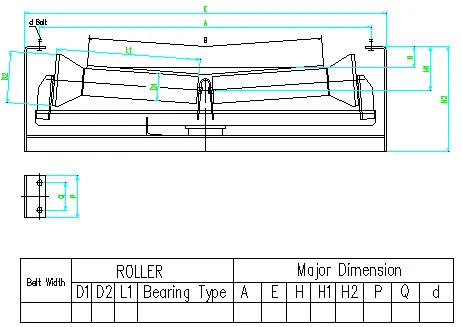 Afrikaans
Afrikaans  Albanian
Albanian  Amharic
Amharic  Arabic
Arabic  Armenian
Armenian  Azerbaijani
Azerbaijani  Basque
Basque  Belarusian
Belarusian  Bengali
Bengali  Bosnian
Bosnian  Bulgarian
Bulgarian  Catalan
Catalan  Cebuano
Cebuano  Corsican
Corsican  Croatian
Croatian  Czech
Czech  Danish
Danish  Dutch
Dutch  English
English  Esperanto
Esperanto  Estonian
Estonian  Finnish
Finnish  French
French  Frisian
Frisian  Galician
Galician  Georgian
Georgian  German
German  Greek
Greek  Gujarati
Gujarati  Haitian Creole
Haitian Creole  hausa
hausa  hawaiian
hawaiian  Hebrew
Hebrew  Hindi
Hindi  Miao
Miao  Hungarian
Hungarian  Icelandic
Icelandic  igbo
igbo  Indonesian
Indonesian  irish
irish  Italian
Italian  Japanese
Japanese  Javanese
Javanese  Kannada
Kannada  kazakh
kazakh  Khmer
Khmer  Rwandese
Rwandese  Korean
Korean  Kurdish
Kurdish  Kyrgyz
Kyrgyz  Lao
Lao  Latin
Latin  Latvian
Latvian  Lithuanian
Lithuanian  Luxembourgish
Luxembourgish  Macedonian
Macedonian  Malgashi
Malgashi  Malay
Malay  Malayalam
Malayalam  Maltese
Maltese  Maori
Maori  Marathi
Marathi  Mongolian
Mongolian  Myanmar
Myanmar  Nepali
Nepali  Norwegian
Norwegian  Norwegian
Norwegian  Occitan
Occitan  Pashto
Pashto  Persian
Persian  Polish
Polish  Portuguese
Portuguese  Punjabi
Punjabi  Romanian
Romanian  Russian
Russian  Samoan
Samoan  Scottish Gaelic
Scottish Gaelic  Serbian
Serbian  Sesotho
Sesotho  Shona
Shona  Sindhi
Sindhi  Sinhala
Sinhala  Slovak
Slovak  Slovenian
Slovenian  Somali
Somali  Spanish
Spanish  Sundanese
Sundanese  Swahili
Swahili  Swedish
Swedish  Tagalog
Tagalog  Tajik
Tajik  Tamil
Tamil  Tatar
Tatar  Telugu
Telugu  Thai
Thai  Turkish
Turkish  Turkmen
Turkmen  Ukrainian
Ukrainian  Urdu
Urdu  Uighur
Uighur  Uzbek
Uzbek  Vietnamese
Vietnamese  Welsh
Welsh  Bantu
Bantu  Yiddish
Yiddish  Yoruba
Yoruba  Zulu
Zulu Exploring the Dynamics of Central Roller Mechanisms in Engineering Applications
The Centre Roller A Crucial Piece of Equipment in Modern Machinery
In the dynamic world of manufacturing and logistics, efficiency and precision play pivotal roles. Among the critical components that facilitate these attributes is the centre roller—a seemingly simple, yet indispensable element in a variety of machines and systems. The centre roller serves numerous functions and is vital in applications ranging from conveyor systems to industrial processes.
At its core, the centre roller is designed to provide support and movement to goods and materials as they traverse various stages of production or transport. Its configuration often consists of a cylindrical shape, allowing for smooth rolling motion, which minimizes friction and wear. The innovative design makes it ideal for applications that require a continuous flow of items, ensuring that operations run seamlessly without interruption.
One of the primary uses of centre rollers is in conveyor systems. In these setups, the rollers facilitate the movement of goods along a predetermined path. For instance, in a warehouse setting, items are often transported from one station to another using conveyor belts. Here, centre rollers play a crucial role in keeping the belt aligned and functional, preventing misalignment that could halt production or cause damage to merchandise.
centre roller

Moreover, centre rollers are commonly found in manufacturing lines, particularly in industries like automotive assembly, food processing, and packaging. In these environments, the reliability of each component is vital, as any malfunction could lead to a cascading effect, potentially resulting in costly downtimes. Centre rollers, therefore, must be constructed from durable materials that can withstand heavy loads and continuous use. This durability not only ensures operational efficiency but also extends the equipment's lifespan, providing a good return on investment for businesses.
The adaptability of centre rollers contributes significantly to their popularity. They can be engineered in various sizes and configurations to accommodate different weights and types of products. This versatility extends their use into more complex machinery, such as textile and printing machines, where precise handling of materials is essential for achieving high-quality results.
Additionally, the integration of technology into the design of centre rollers has enhanced their functionality. Modern versions may come equipped with sensors that monitor performance, detect wear, and provide real-time data analytics. Such intelligent rollers help prevent unforeseen breakdowns, allow for predictive maintenance, and improve overall system performance. As industries continue to embrace automation and smart technologies, the role of centre rollers will likely evolve even further, integrating more sophisticated features that enhance their efficiency.
In conclusion, while the centre roller may appear to be a minor component within the vast landscape of industrial machinery, its significance cannot be overstated. From ensuring the smooth operation of conveyor systems to enhancing the precision of manufacturing processes, centre rollers are essential for maintaining productivity and efficiency in various sectors. As technology advances, we can expect further innovations in the design and functionality of these rollers, reinforcing their status as a cornerstone of modern manufacturing and logistics. Businesses that prioritize the integration of quality centre rollers into their systems will undoubtedly position themselves for success in an increasingly competitive marketplace, benefiting from improved efficiency, longevity, and overall operational excellence.
-
Revolutionizing Conveyor Reliability with Advanced Rubber Lagging PulleysNewsJul.22,2025
-
Powering Precision and Durability with Expert Manufacturers of Conveyor ComponentsNewsJul.22,2025
-
Optimizing Conveyor Systems with Advanced Conveyor AccessoriesNewsJul.22,2025
-
Maximize Conveyor Efficiency with Quality Conveyor Idler PulleysNewsJul.22,2025
-
Future-Proof Your Conveyor System with High-Performance Polyurethane RollerNewsJul.22,2025
-
Driving Efficiency Forward with Quality Idlers and RollersNewsJul.22,2025





























